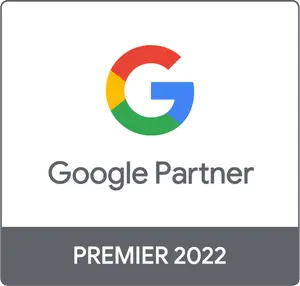Definition of “tracking” or follow-up: surveillance, detailed observation (Spanish Dictionary in WordReference 2021).
Once you've set up Google Analytics and added tags to your website, you'll immediately be performing basic tracking. This tracking includes data such as the number of visits per user, the number of users who visited the website, and the average duration of each visit.
When digital marketers talk about "tracking," we're referring to the KPIs (key performance indicators) that occur on your website. These include the number of users who fill out a form requesting information, the number of items purchased, revenue generated, and so on. These actions can only be tracked and measured through more detailed configuration.
If you are already doing the above and are working with a marketing specialist and a developer, you will be interested in reading the main mistakes to avoid when examining tracking settings.
Mix different types of conversions:
Avoid counting completed forms, PDF downloads, and phone calls as the same conversion, and don't calculate your cost per lead (CPL) based on the sum of these different leads. To prevent this, ask yourself the following questions:
-
Among those we have just mentioned, which is the most important action?
-
Does downloading a PDF have the same value as filling out a form to request a demo? If they don't have the same value, make sure you're measuring those actions separately.
Set up tracking on payment platforms and not on Google Analytics:
If you only set up tracking on paid platforms, what happens to organic traffic? Keep in mind that top-of-the-funnel campaigns, such as Facebook Ads, have a positive impact on organic search engine results and social media results. Tracking all performance (regardless of whether it's on paid or free platforms) will give you a broader view of your digital marketing activities. Overall, Google Analytics is a very useful tool for community managers, SEO specialists, marketing managers, and directors, as it allows you to analyze all KPIs in a single interface.
Duplicate efforts with different configuration methods:
Google Tag Manager, Google Analytics, and Google Ads belong to the same group of Google tools. It's recommended to set up tracking in Google Tag Manager (GTM). Once you've set it up in GTM, it can be imported directly into the rest of Google's platforms.
What's more, all tracking for paid advertising platforms (Facebook Ads, LinkedIn Ads, Twitter Ads, Criteo Ads, etc.) can be configured in Google Tag Manager.
Track clicks on the “submit” button instead of tracking completed forms:
This is usually due to a lack of technical knowledge. Tracking "submit" clicks as if they were filled out forms is the most convenient solution when someone doesn't understand how tracking works.
Track website visits as “leads”
I don't understand why anyone would do this tracking, since you can see visits to specific pages on your website in Google Analytics. Again, this is due to inexperience in setting up tracking. Measuring a visit as part of a conversion and CPL doesn't optimize your paid media advertising accounts or help you achieve your business goals.
If you're outsourcing tracking or someone else has set it up for you, make sure you understand what a conversion means for your business and that it appears correctly in your internal reports. For example, if you're measuring demo requests as part of your cost per conversion in your reports, confirm that your agency provides you with reports that use the same metrics.
Read the following scenarios:

In this case, the company would like to know if users are downloading the guides, but they've set a target cost per conversion (or CPL) based on demo bookings. The agency makes sure to track both conversions and measures the cost per conversion separately, based on demo bookings, to achieve the client's objectives.
If the agency combines demo bookings with guide downloads and measures them as a single conversion, the cost per conversion won't be aligned with your business. This means your agency is moving in a direction other than your company's goals.

Avoid these common mistakes to ensure your campaigns are successful and to ensure efficient communication between agency and client.

Founder of PaidStrategy and Performance Marketing Specialist.
Over 10 years of experience in Performance Marketing. Expert in achieving goals through analysis and strategy management with internal teams and clients. Her two superpowers? Asking the right questions and moving from chaos and improvisation to order and planning.






